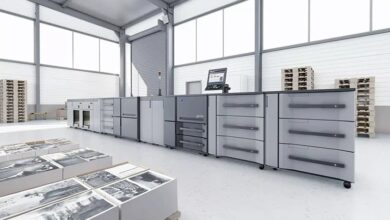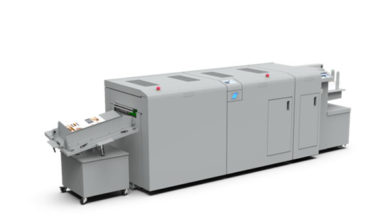Digital printing to continue to take market share from offset presses
In 2017 digital printing accounts for 16.2% of the global print market value and 2.9% of the volume. This is up from 2.1% of the volume in 2012, and the transition is accelerating to 3.9% of volume by 2022 according to the latest exclusive research from Smithers Pira.
In 2017, litho still dominates the world print landscape in terms of the number of pages printed; And by 2022 it will still account for over 70% of the world print output, but much litho print is relatively low-value publication printing – such as newspapers, magazines and directories; which are falling – while the most lucrative opportunities lie in value-adding work using digital print.
The relative cost position of analogue and digital printing is continually changing as new equipment comes on to the market, and the volumes of toner and inkjet grow while prices fall. This is generally making digital print more cost-effective against traditional analogue printing at ever higher run lengths. There is a continuing trend of falling run lengths as print buyers act to make sure their content is up to date and there is pressure to reduce the amount of inventory and work-in-progress. The result is a continuation of the analogue-to-digital print transformation.
“Digital print has developed significantly from its introduction in the 1970s for transactional print, with colour cut sheet arriving in the mid-1990s,” said Dr. Sean Smyth the report’s author. “Since then electrophotography and inkjet have enjoyed the lion’s share of the research and development budgets spent on printing technology, pushing the quality, reliability and productivity of systems forward while at the same time reducing the end-user cost of producing print. This has pushed the adoption of the technology into print service providers and packaging converters, initially because of the variable print capability and the economic benefits of low runs. As more end users invest in the technology they are identifying new market niches and benefits for print buyers, pushing further adoption.”
Workflow developments are lowering the transaction costs associated with print, opening new market opportunities to individuals and micro-businesses. Sheetfed litho has benefited as printers group jobs together on large sheets to share the set-up costs. Using high levels of automation is reducing the set-up times and waste, making litho more cost-effective against cut-sheet colour toner presses. These incremental developments are mirrored across all printing processes. And many companies are adopting advanced manufacturing techniques to further improve their efficiencies.
The biggest changes are in inkjet, where the achievable quality has greatly improved, along with the reliability and consistency of the printing. The development money in inkjet dwarfs all other technology developments in printing and packaging and this will continue. Single-pass sheetfed and webfed presses are now available and are firmly aimed at most printing applications.

.gif)



